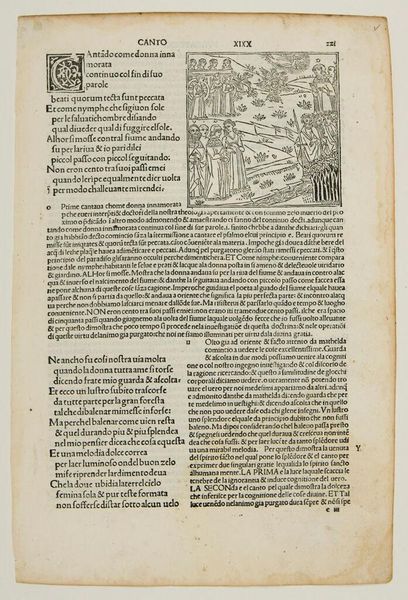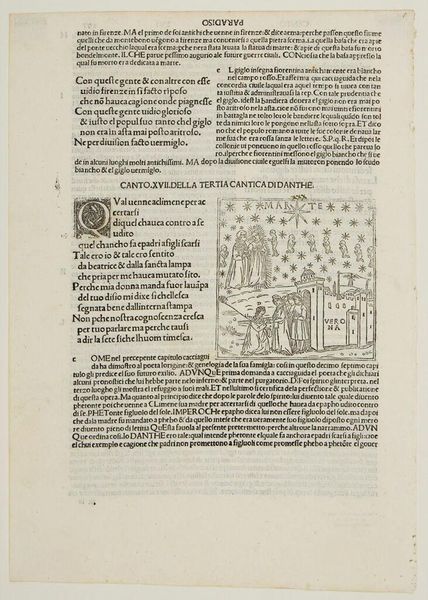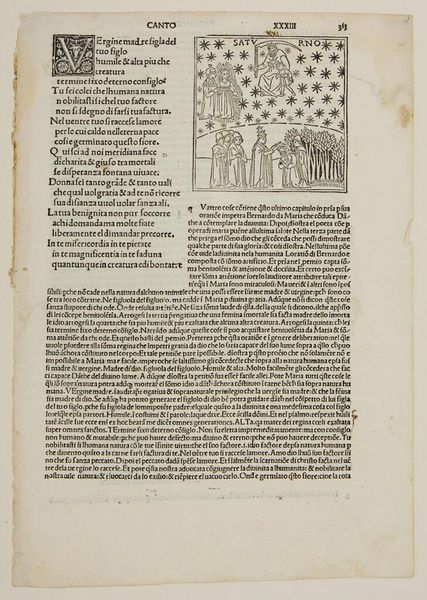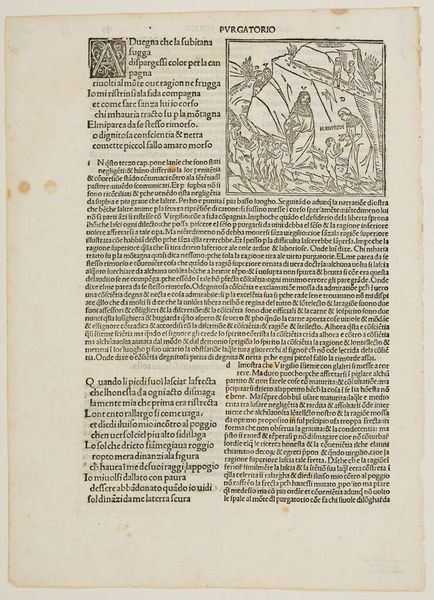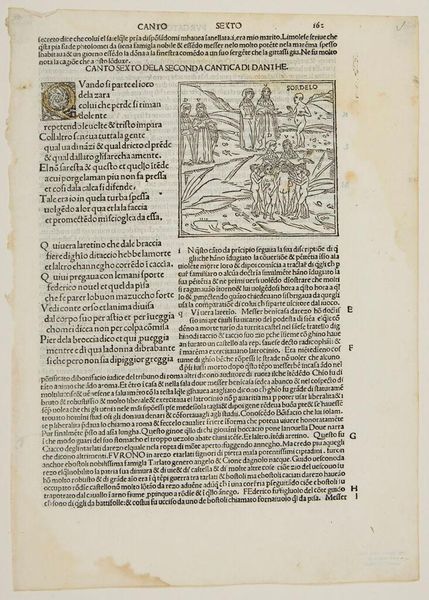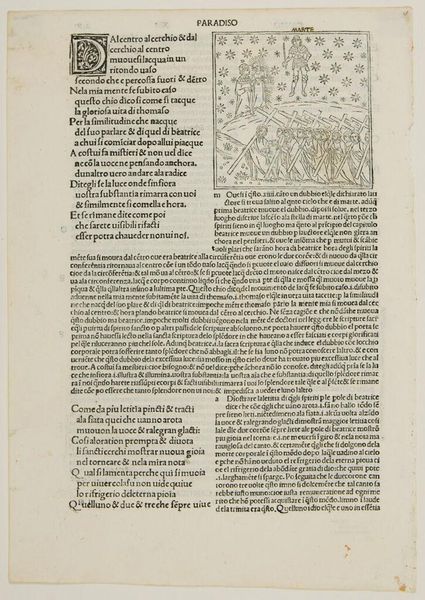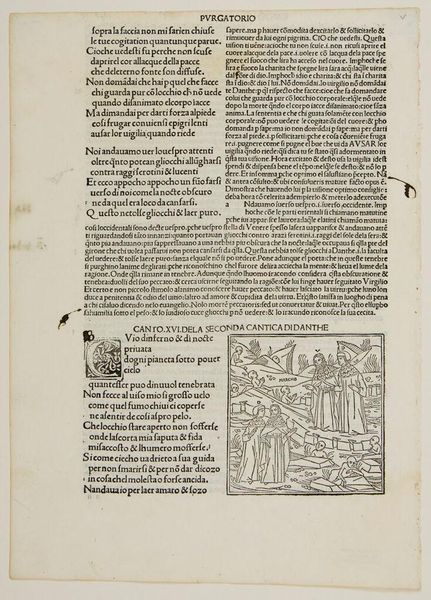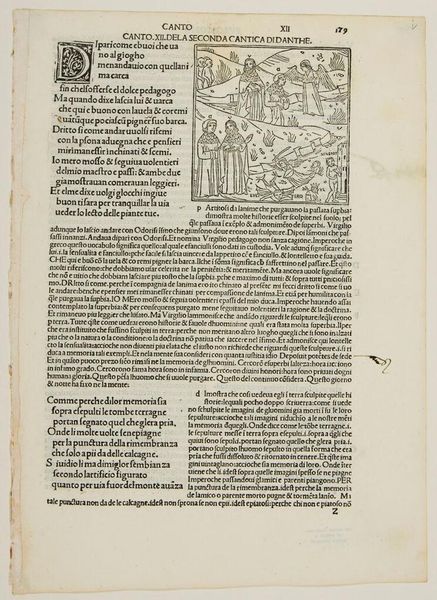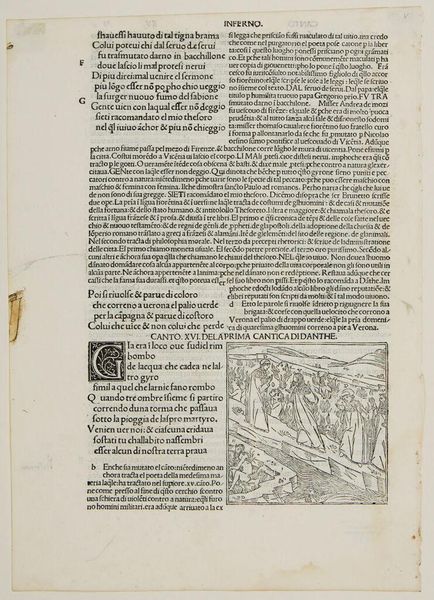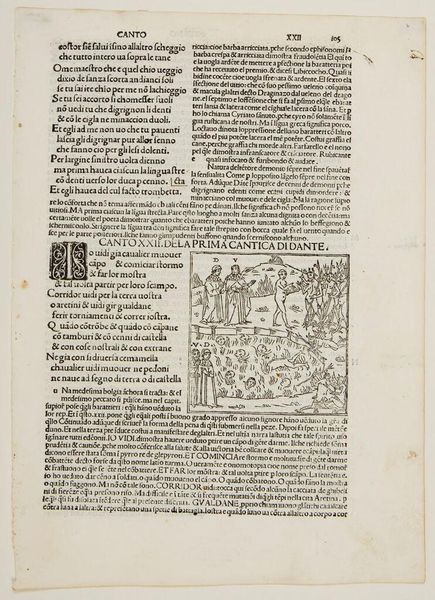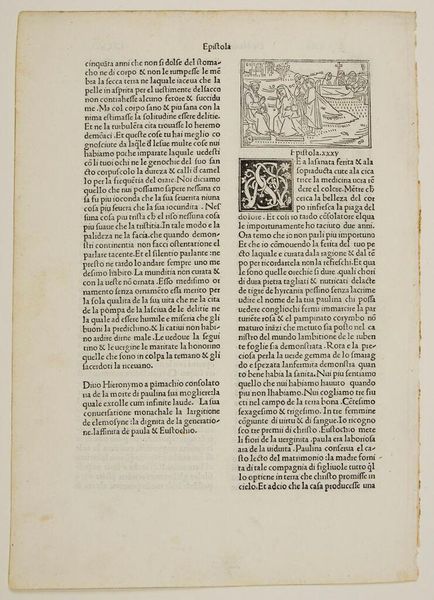
Copyright: CC0 1.0
Curator: Let’s turn our attention to this intriguing woodcut, “Canto XVIII. The Earthly Paradise; Lethe; Matilda,” created by an anonymous artist. Look at the detail packed into such a small space! Editor: Yes, immediately I notice the density of the foliage and the graphic quality of the line work. It's quite striking how the artist used such simple materials to create a scene that feels both lush and slightly foreboding. Curator: It depicts a scene from Dante’s Purgatorio, specifically Canto XXVIII, representing the Earthly Paradise. The river Lethe flows through it, with Matilda gathering flowers nearby. These are strong symbols of purification and renewal. Editor: I'm curious about the labor involved in producing this. Woodcuts require a high level of skill and precision. You have to consider the time investment in carving the block and printing the image. Also, what was the social status of the artist? Curator: Good point. The symbolism of the earthly paradise, the river Lethe, Matilda gathering flowers--each is deeply rooted in Christian eschatology. They speak to profound themes of redemption and the soul's journey. Editor: Absolutely, and by analyzing the artist’s choices in material and labor, we gain insight into the socioeconomic conditions that shaped the image. Thanks to your insights, I also see how its symbolism has evolved over time.
Comments
No comments
Be the first to comment and join the conversation on the ultimate creative platform.
